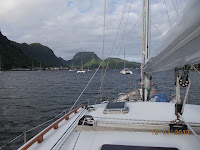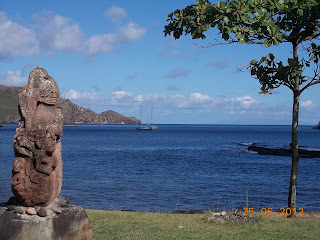Well, after I jumped ship in Pago Pago and flew back to London, the owner flew out from Oz intending to complete the final leg to Fremantle - about 4000 miles - in one go….. easy right?
I had an email from the Captain 10 days later saying that they had diverted to the Islands of Vanuatu. After just a few days at sea the owner couldn’t stand the motion of the boat either! I don’t feel quite so much of a wimp now!
Apparently he (the owner) booked straight into a hotel on docking at Port Vila on the island of Afife
So, the owner flew back to Oz and two crew members were recruited and flew in and they set off on the 13th August. They reached Darwin
The gas solenoid gave up the ghost as it got corroded with all the sea water washing over the decks and getting into the gas locker. No gas to cook with.
A jubilee clip on the water pipes gave way so all the fresh water in the tanks flowed silently into the bilges …. No water to make that vital cuppa…..
The generator began playing up again……. No electricity….
How the owners could even suggest that the captain and crew continued on without stopping for repairs, gas and water is just beyond belief! But hey, having endured 5 months of the same, I’m not really surprised!
The auto pilot went off at one point and they nearly ended up on a reef! There are lots of those in that area around the north passage!
When they docked at Darwin
So they set sail on 8th September on the last leg round the top of Oz to Fremantle. They should arrive in the next week or so.
…..And I was hoping that I had taken the ‘Hex’ with me when I got off the boat!!! I wouldn’t have missed the experience for the world, met some wonderful people and visited some amazing places, but I am so pleased to be back on dry land….


















































